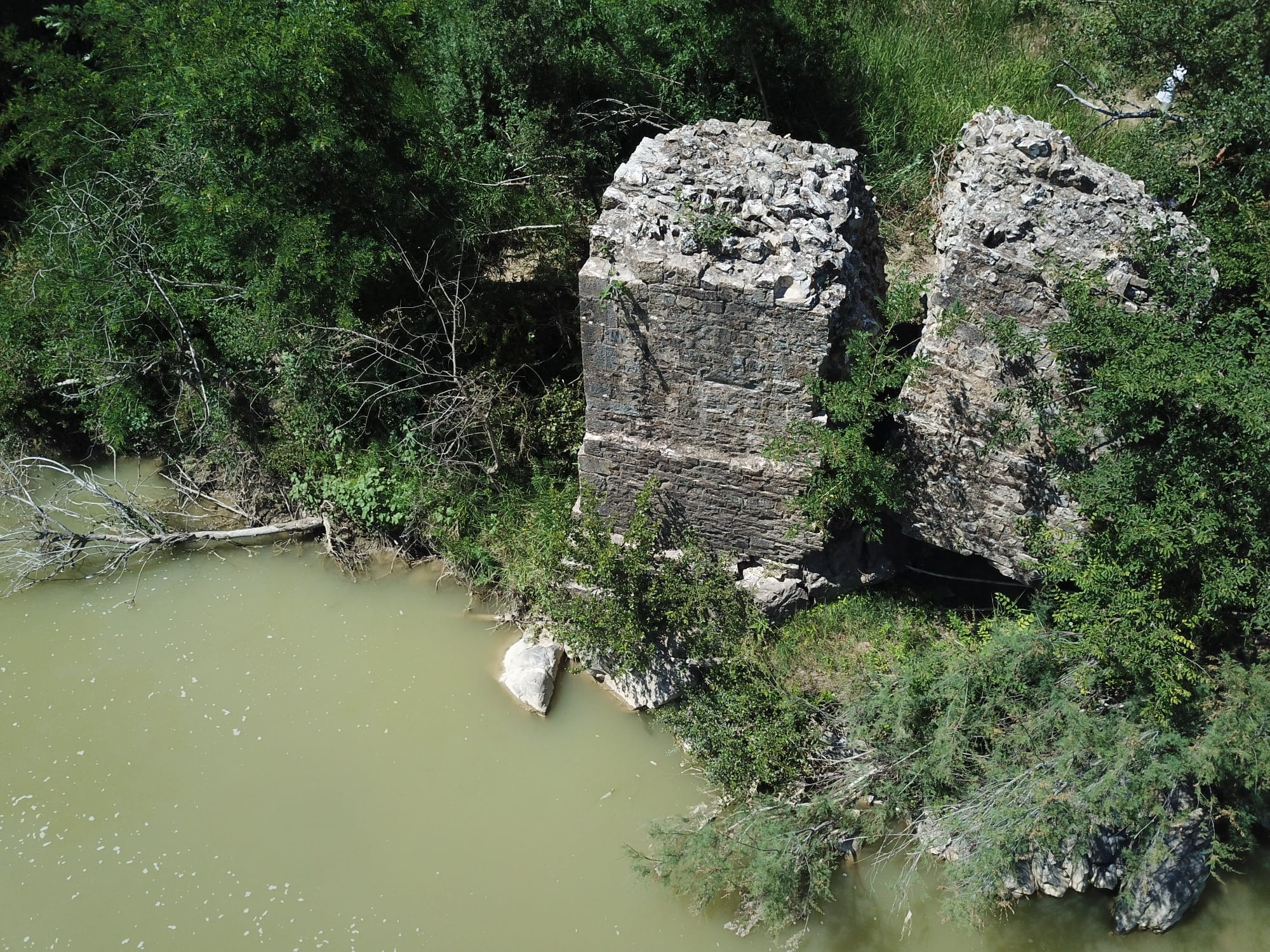In defiance of the weather, the IMPERO Team continued to make great strides uncovering both the area originally opened in the previous season and the house newly excavated this year. The portion of the team focused on the house defined the wall facing inward to the hilltop and began to get a sense of the corners of the room—investigating the extent of the collapse of the side walls and attempting to demarcate the perimeter. Unfortunately, the three walls closer to the slope have been greatly disturbed by thick trees growing within and around the rocks, obscuring the corners, wall alignment, and, particularly in the case of the Western wall, the relationship to another, more clearly outlined wall likely belonging to an adjacent house. Nevertheless, the students removed several significantly problematic tree roots and extensive layers of collapse, increasingly revealing the corner on the South-Western portion of the site.
Further, the team opened a trench approximately a meter across immediately outside the best-defined wall of the house where an abundance of pottery fragments were discovered, stirring new considerations of chronology for Castellaraccio. The sheer amount and typological significance of these sherds were a pleasant accompaniment to the visibility of the day’s labor within the perimeter of the house itself, which heralded an inconsistent depth in the layer of humus toward the North-West corner of the site. The organically rich topsoil seemed to follow the shape of a semi-circle, contrasted with a lighter soil encompassing a secondary layer of collapse that may signal a cut. As students fell easily into the rhythm of picking, shoveling, and troweling despite the majority’s lack of experience with the tools, it became clear as the day progressed that this corner will act as a focal point once the perimeter of the room is fully defined and the interior of the space is levelled.

